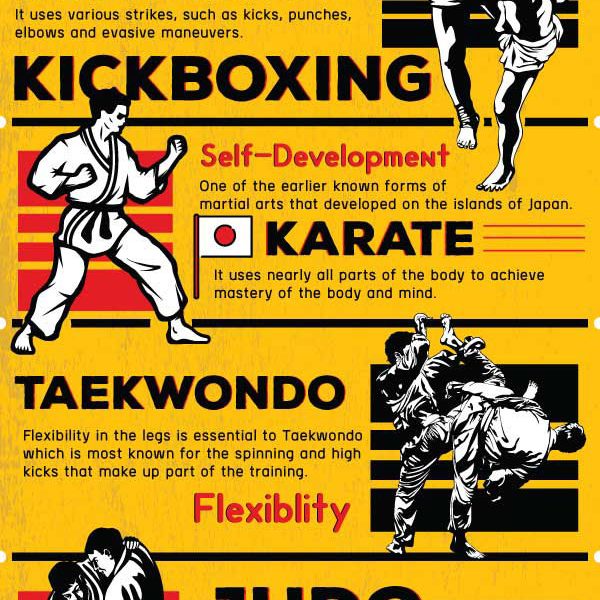Conventional Martial Arts And Modern Combat Sports: A Thorough Review Of Their Unique Distinctions
Conventional Martial Arts And Modern Combat Sports: A Thorough Review Of Their Unique Distinctions
Blog Article
Post Composed By-Kok Burch
When you think of martial arts, do you lean a lot more towards the traditional practices or the modern-day fight sporting activities? Each path provides distinct benefits and experiences, shaped by their viewpoints and training approaches. Standard martial arts emphasize personal growth and technique, while contemporary battle sports concentrate on competition and efficiency. Understanding these distinctions can assist you in selecting the ideal technique for your journey. However how do martial arts quiz questions materialize in training and ideology?
The Viewpoint and History Behind Traditional Martial arts
While many individuals connect martial arts with physical fight, the philosophy and history behind conventional martial arts run much deeper. You'll find that these techniques stress individual growth, self-control, and regard.
Stemming from Visit Home Page , traditional martial arts were frequently established for Self-Defense and spiritual growth. They embody concepts such as equilibrium, consistency, and self-control, directing experts beyond simple combating abilities.
As you educate, you'll not only discover strategies however additionally gain understandings right into the society and worths that formed these arts. The rituals and practices, commonly given with generations, foster a feeling of area and belonging.
The Competitive Nature of Modern Battle Sports
Modern fight sports have changed the landscape of martial arts into a highly competitive arena, where professional athletes face off in a test of skill, technique, and endurance.
You'll see that competitors are typically organized with stringent rules and regulations, making sure justice and safety and security. These occasions attract large target markets, sustaining the exhilaration and intensity of competitions.
Professional athletes train carefully, not just for physical prowess yet likewise for psychological strength, recognizing that every detail counts in the ring. The adrenaline rush throughout competitors is palpable, as boxers push their restrictions to declare victory.
Fans value the athleticism and artistry entailed, making contemporary combat sports a thrilling phenomenon that continues to progress and captivate fanatics around the world.
Training Techniques and Methods: A Relative Evaluation
The competitive atmosphere of contemporary battle sports demands innovative training techniques that vary considerably from traditional martial arts.
In contemporary training, you'll focus on particular strategies, competing, and conditioning, usually making use of drills that mimic actual fight situations. You'll see a focus on quantifiable efficiency and frequent competitors to analyze your abilities.
On the other hand, traditional martial arts prioritize kinds, katas, and philosophical trainings, often emphasizing discipline and respect over competitors.
martial arts classes near me for adults is usually less intense and might entail repeated technique as opposed to real-time sparring.
While both methods build ability and fitness, modern fight sports offer a much more vibrant and adaptable training atmosphere, preparing you for instant difficulties in the ring or cage.
Pick the path that lines up with your objectives and interests.
Verdict
In picking between standard martial arts and modern combat sporting activities, it truly comes down to what you value many. If you're seeking personal growth, technique, and a feeling of neighborhood, traditional arts may be your finest fit. But if you grow on competitors and real-time challenges, contemporary battle sports could be the means to go. Ultimately, both courses offer special advantages, so it's all about aligning your training with your personal objectives and rate of interests.
